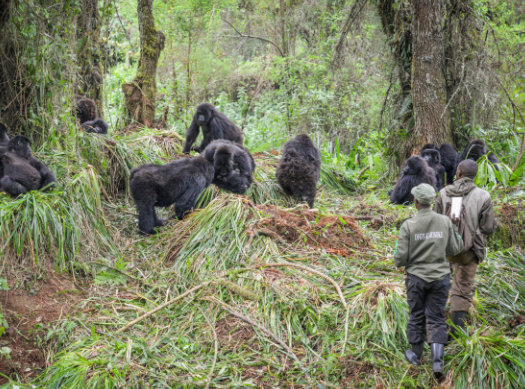Why Gorillas Are Social Animals
Gorillas, the gentle giants of the animal kingdom, are more than just impressive physical specimens; they are also profoundly social animals. Understanding their social behavior enriches our knowledge of wildlife and helps in conservation efforts. Let’s delve into the reasons why gorillas thrive in social groups and what that means for their survival and well-being.
The Family Structure of Gorilla Troops
Gorilla troops are typically led by a dominant male known as a silverback, who is responsible for the group’s safety and decision-making. This social structure is crucial for maintaining harmony and order among members. Silverbacks often exhibit strong parental care, protecting their young and teaching them essential survival skills. The close-knit family bonds in a troop foster a sense of security; they work together to find food, evade predators, and nurture their young. This cooperative living is vital, especially as their natural habitats face numerous threats from deforestation and human encroachment.
Communication and Bonds in Gorilla Groups
Gorillas are exceptionally communicative animals, using a variety of vocalizations, facial expressions, and body language to convey their emotions and intentions. These communication methods strengthen the bonds between troop members, helping to maintain social harmony. For instance, playful interactions among young gorillas encourage social skills and teach them how to navigate relationships within their group. Furthermore, the emotional support gorillas provide each other is essential; they have been observed comforting one another in times of stress or distress, showcasing their emotional intelligence and capacity for empathy.
Conservation and the Importance of Socialization
Understanding the social nature of gorillas is crucial for conservation efforts. As these animals face increasing threats from habitat destruction and poaching, maintaining their social structures becomes even more important. Protecting gorilla habitats ensures that these animals can live in stable social groups, which is vital for their mental health and overall survival. Conservation programs that emphasize habitat protection and the social needs of gorillas can lead to more effective strategies, helping to ensure that future generations of gorillas thrive in their natural environments.
In conclusion, gorillas are social animals with complex family dynamics and remarkable communication skills. Their social structure not only contributes to their survival but also illustrates the importance of community in the animal world. As we learn more about these magnificent creatures, we can appreciate the role they play in their ecosystems and the urgent need to protect them. If you’re passionate about wildlife conservation, consider supporting organizations dedicated to gorilla protection and preservation. Together, we can make a difference!

